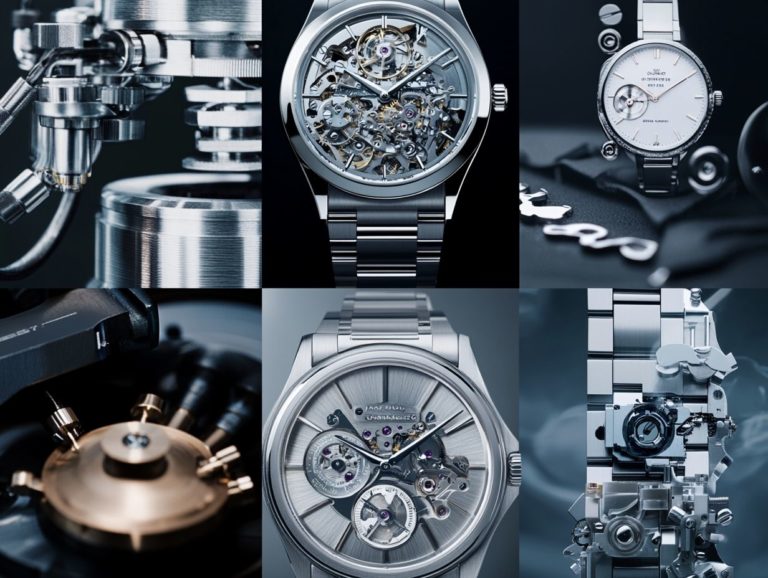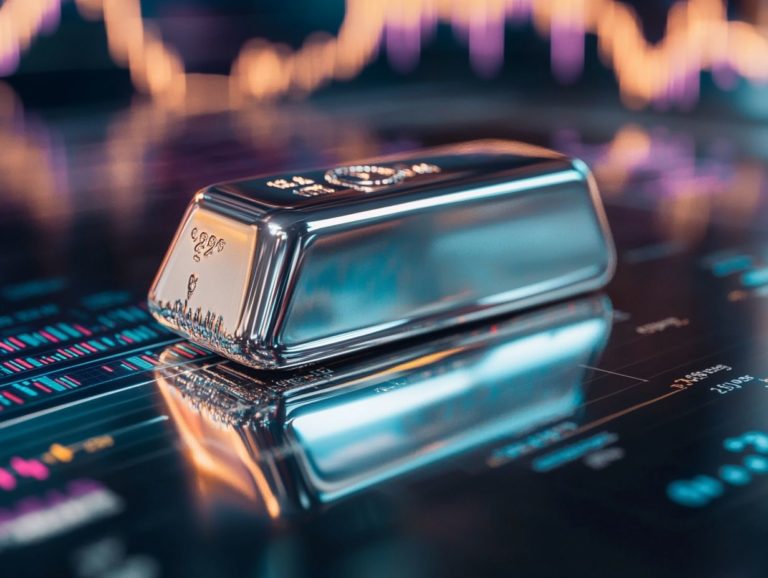Investment Risks: Is Palladium Worth It?
Palladium has surfaced as a captivating investment option, drawing the interest of both seasoned investors and those just starting their financial journey.
Often eclipsed by gold and silver, this precious metal possesses distinctive qualities and industrial applications that could yield impressive returns. However, like any investment, it is accompanied by its own set of risks and considerations.
This article delves into the essence of palladium, its historical performance, the driving forces behind its demand, and the crucial factors to contemplate before entering this intriguing market. Whether you’re eager to diversify your portfolio or simply curious about palladium, valuable insights await you.
Contents
- Key Takeaways:
- Understanding Palladium as an Investment
- Potential Benefits of Investing in Palladium
- Risks Associated with Investing in Palladium
- Factors to Consider Before Investing in Palladium
- Frequently Asked Questions
- What risks come with investing in palladium?
- Is investing in palladium considered a high-risk investment?
- What factors should I consider before investing in palladium?
- Are there any potential geopolitical risks that could affect the value of palladium?
- What are some ways to mitigate the risks associated with investing in palladium?
- Is palladium worth investing in despite the potential risks?
Key Takeaways:
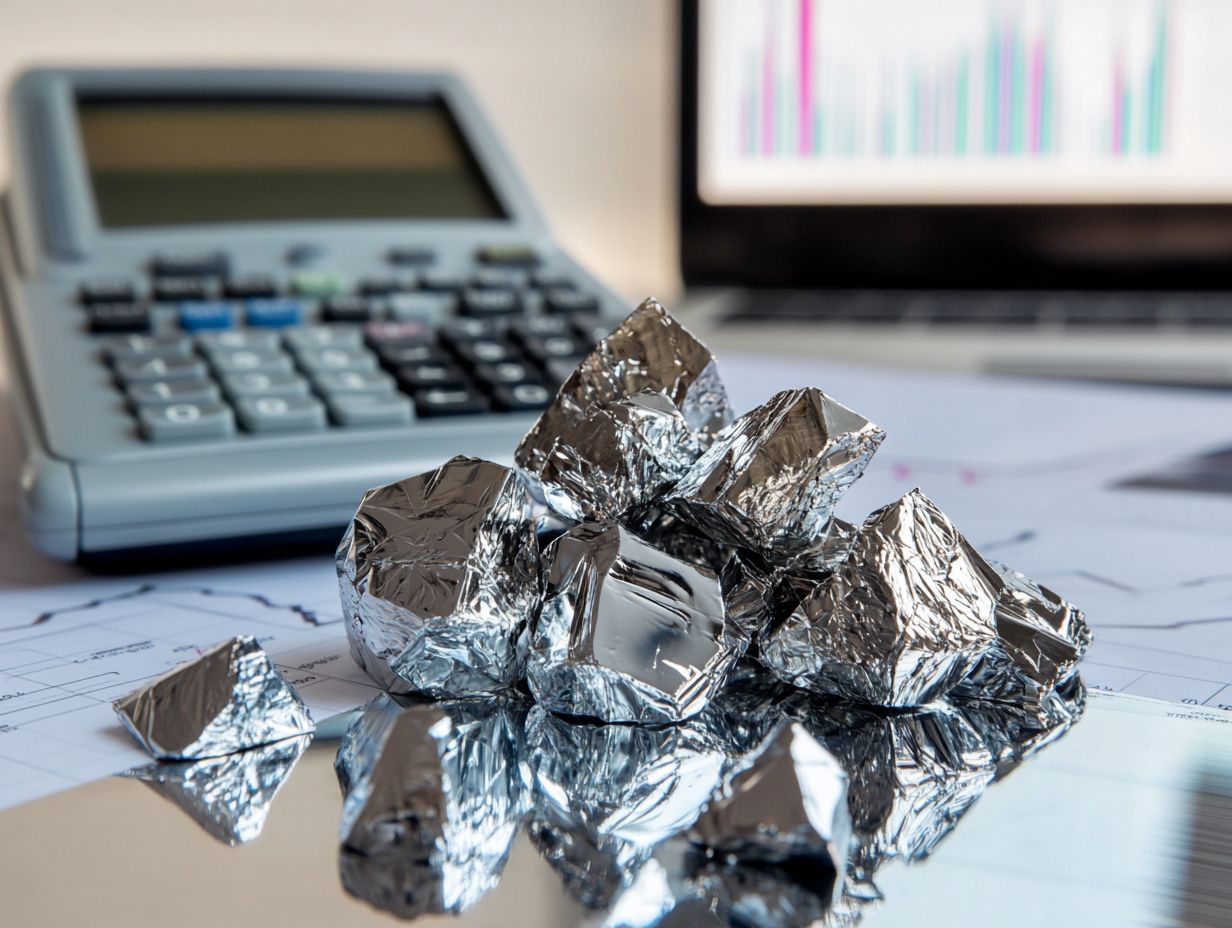
- Palladium is a precious metal with unique industrial uses and has shown strong historical performance. However, its volatile market and supply and demand factors pose risks for investors.
- Before investing in palladium, consider your financial goals and risk tolerance. It should also be viewed as a diversification option for your investment portfolio.
- Palladium offers exciting advantages, but it is important to carefully weigh the risks and conduct thorough research before making investment decisions. It may not be the right choice for every investor.
Understanding Palladium as an Investment
Palladium, a precious metal widely recognized for its pivotal role in the automotive industry, particularly in catalytic converters, presents an intriguing investment opportunity for those looking to diversify their portfolios.
Its unique properties and strong industrial demand, especially from the automotive sector, enhance its appeal as a safeguard against market risks and inflation.
The landscape for investing in palladium is rich with options, including palladium ETFs, which provide accessibility and liquidity. This makes it straightforward to gain exposure to this precious metal without the complexities tied to purchasing physical palladium.
What is Palladium?
Palladium is a rare and precious metal belonging to the platinum group and plays a crucial role in manufacturing catalytic converters that help reduce harmful emissions.
But don t let that singular application fool you; palladium boasts unique properties that extend into other realms. In electronics, its excellent conductivity and impressive resistance to corrosion make it an exceptional choice for connectors and components in today s devices. Its compatibility with living tissues has earned it a place in dental alloys and medical instruments, where durability and safety are essential.
With its rarity and the surging demand across various sectors, palladium becomes an enticing investment opportunity. Savvy investors are increasingly aware of market dynamics, particularly the supply constraints and geopolitical factors that significantly affect palladium’s value. This combination enhances its appeal and solidifies its status as a strategic precious metal in the contemporary economy.
Potential Benefits of Investing in Palladium
Investing in palladium offers exciting advantages that can boost your investment strategy. It holds the promise of potential price appreciation, allows for effective portfolio diversification, and serves as a reliable hedge against economic uncertainties.
These qualities make palladium a compelling addition to any investment strategy centered on precious metals.
Don’t miss out on this opportunity! Explore the potential of investing in palladium further or consult with a financial advisor for tailored advice.
Historical Performance and Market Trends
The historical performance of palladium reveals significant price fluctuations, driven by intricate supply-demand dynamics within the market, especially from the automotive sector. Here, the demand for catalytic converters has surged.
These fluctuations are shaped by various factors, including geopolitical tensions, evolving emissions regulations, and shifts in consumer behavior. Recently, the growing investment in electric vehicles has somewhat tempered traditional demand for palladium. It is essential to monitor how these developments interact with other precious metals like platinum and gold.
Economic indicators, such as inflation rates and currency strength, play a vital role in influencing palladium prices. As a market stakeholder, you must remain informed about these related factors.
Industrial Uses and Demand

Palladium’s primary industrial use is in the automotive sector, where it is an essential component in catalytic converters. This makes it a key driver of demand for this precious metal.
However, its applications extend beyond automobiles. In the electronics industry, palladium is found in various components, from connectors to capacitors, enhancing technological performance and durability. In dentistry, it plays a vital role in crafting crowns and bridges due to its impressive biocompatibility.
As industries increasingly seek palladium for diverse applications, rising industrial demand creates enticing investment opportunities. This is particularly relevant when considering market dynamics shaped by automotive regulations aimed at reducing emissions, further solidifying palladium’s significance across multiple sectors.
Risks Associated with Investing in Palladium
Key Risks
Investing in palladium comes with exciting opportunities, but you must be aware of the risks involved. These include market volatility, price fluctuations, and external geopolitical events that can significantly impact supply and demand dynamics.
It’s essential to be fully aware of these factors as you navigate this investment landscape.
Market Volatility and Price Fluctuations
Market volatility significantly impacts palladium prices, creating frequent fluctuations that can challenge your investment decisions. These price swings are influenced by a complex interplay of market conditions, including current economic data and overall investor sentiment.
For instance, when economic indicators signal growth, demand for palladium especially in automotive catalytic converters can surge, pushing prices upward. In contrast, weak economic signals may foster bearish sentiment, resulting in price pullbacks.
To navigate these choppy waters, consider strategies like diversification, which helps spread your risk. You can also employ stop-loss orders, a type of order that sells your investment if the price drops to a certain level, to guard against sudden downturns. Staying attuned to global market trends and adjusting your portfolio accordingly can further mitigate risks tied to liquidity and volatility, fostering a more resilient investment approach.
Supply and Demand Factors
The intricate balance of supply and demand factors in the palladium market is paramount in determining its price, heavily influenced by trends within the automotive industry. This market is particularly sensitive to changes in production levels from key players like Russia and South Africa.
When fluctuations occur, they can significantly impact availability and consequently, costs. If mining output dips due to geopolitical tensions or operational hurdles, you may see prices rise sharply, driven by immediate demand from manufacturers.
External elements like advancements in electric vehicle technology, shifts in emission regulations, and broader economic indicators add layers of complexity to these dynamics. These factors ultimately sway investor sentiment and trading volumes in the palladium market, making it a fascinating landscape for those who dare to navigate it.
Act now to seize these investment opportunities! Subscribe for updates and explore more about investing in palladium.
Political and Economic Factors
Political and economic factors, including rules and regulations that could change and geopolitical events, play a crucial role in shaping the palladium market. These factors affect both the supply chain and investor sentiment.
Consider the recent tensions between Russia and Ukraine. These have introduced a level of uncertainty regarding palladium supply, given that Russia is one of the largest producers of this precious metal. Sanctions and trade restrictions can disrupt exports, causing prices to surge as buyers rush to secure their quantities ahead of potential shortages.
Environmental regulations in South Africa also influence production levels, leading to fluctuations in availability.
Events such as labor strikes or shifts in government policy in these key regions further amplify these market dynamics. This prompts both traders and manufacturers to rethink their strategies.
Factors to Consider Before Investing in Palladium
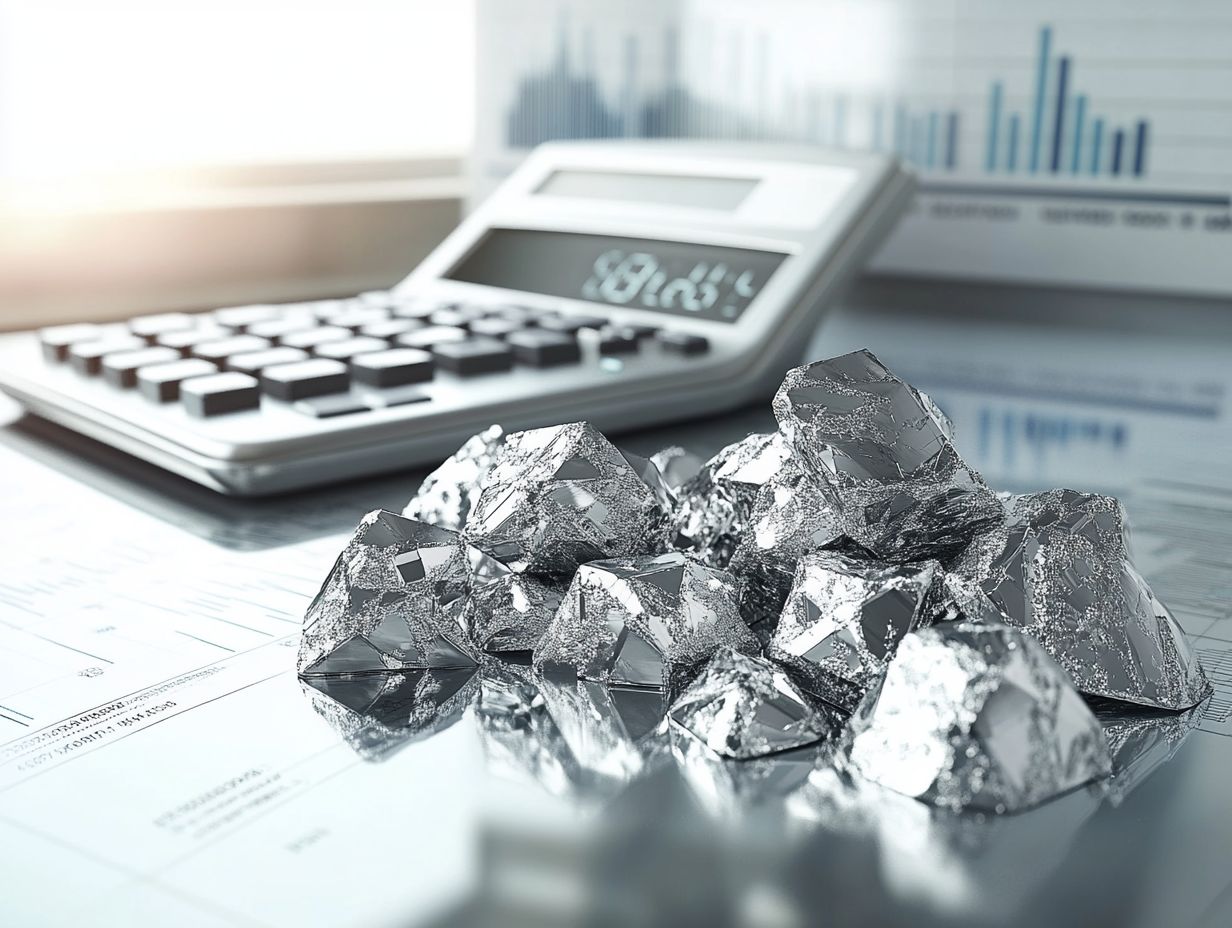
Before you invest in palladium, it s vital to take a close look at your personal financial goals and understand your risk tolerance. Consider how palladium can complement a mix of different types of investments.
This thoughtful approach will help you make informed decisions that align with your overall financial strategy.
Personal Financial Goals and Risk Tolerance
Identifying your personal financial goals and understanding your risk tolerance are essential steps if you’re considering adding palladium to your investment strategy.
By evaluating these factors, you can make informed decisions about how much of your portfolio to allocate to this precious metal, which is known for its volatility and unique market dynamics. For example, if you re a conservative investor prioritizing capital preservation, you might choose minimal exposure to palladium, balancing it with more stable assets.
On the other hand, if you’re an aggressive investor chasing higher returns, embracing a larger stake in palladium could be more appealing.
This personalized approach not only sharpens your financial strategy but also supports your broader diversification objectives, helping to mitigate risk throughout your entire investment portfolio.
Diversification of Portfolio
Diversifying your investment portfolio is essential for mitigating risk. Incorporating palladium as an asset can elevate this strategy by introducing a valuable alternative in precious metals.
This is especially significant because palladium has demonstrated resilience across various market conditions, serving as an effective hedge against volatility. You can gain exposure to this metal through palladium funds that trade like stocks on the stock market, which not only offer liquidity but also simplify management without the hassle of physical storage.
By integrating palladium into your portfolio, you can cultivate a more balanced approach. This reduces reliance on stocks and bonds while capitalizing on the unique characteristics of this precious metal, which frequently moves independently of traditional markets.
Frequently Asked Questions
What risks come with investing in palladium?
The main investment risks associated with palladium include market volatility, geopolitical factors, and supply and demand fluctuations.
Is investing in palladium considered a high-risk investment?
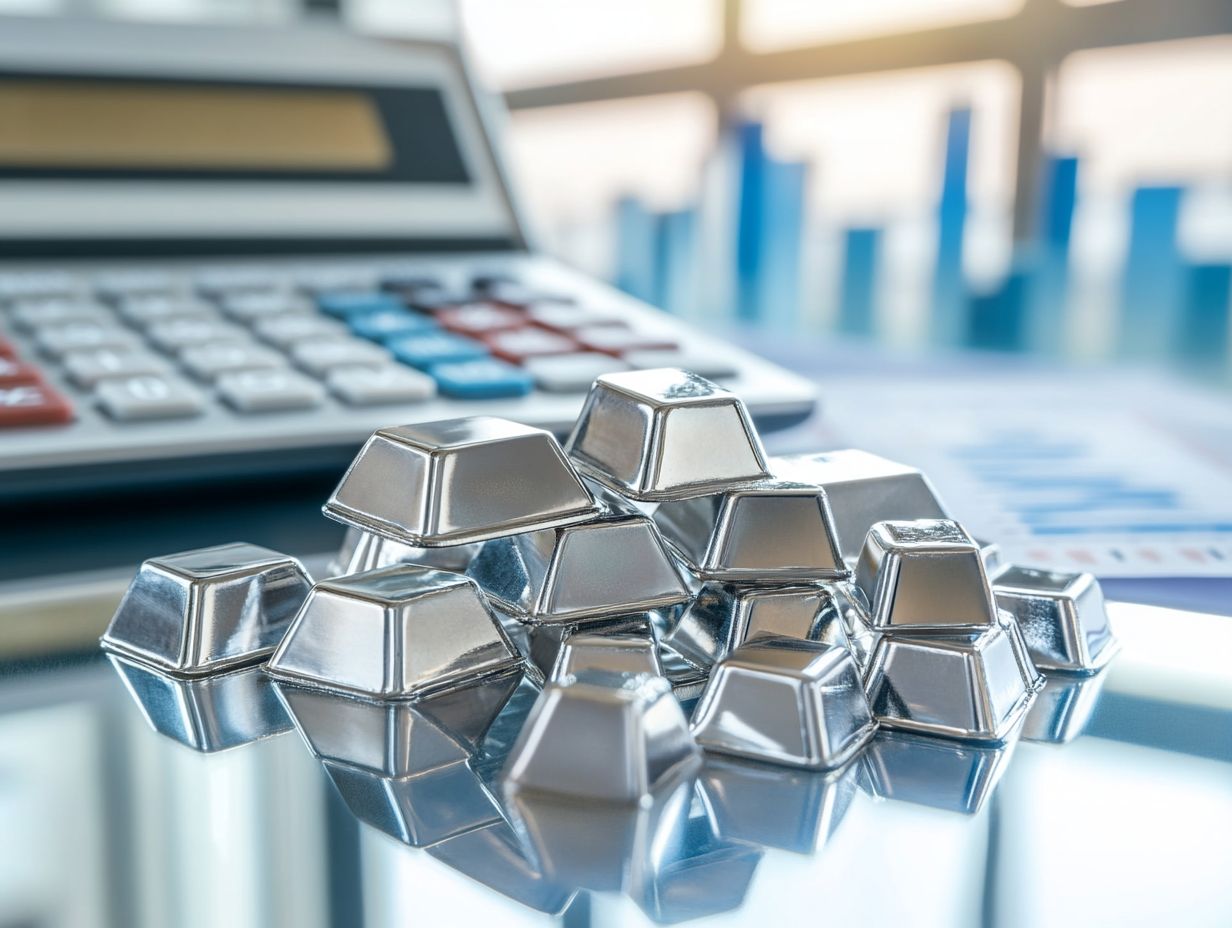
Yes, investing in palladium is considered a high-risk investment due to the volatile nature of the precious metal market.
What factors should I consider before investing in palladium?
Before investing in palladium, you should consider the current market trends, geopolitical factors, and your own risk tolerance level.
Are there any potential geopolitical risks that could affect the value of palladium?
Yes, tensions between countries that produce and consume palladium, such as Russia and China, can have a significant impact on the market value of palladium.
What are some ways to mitigate the risks associated with investing in palladium?
Diversifying your investment portfolio can help reduce risks.
Staying informed about market trends and global events is also crucial.
Is palladium worth investing in despite the potential risks?
Your decision to invest in palladium depends on your risk tolerance and investment goals.
Weigh the risks against potential rewards before you invest.












